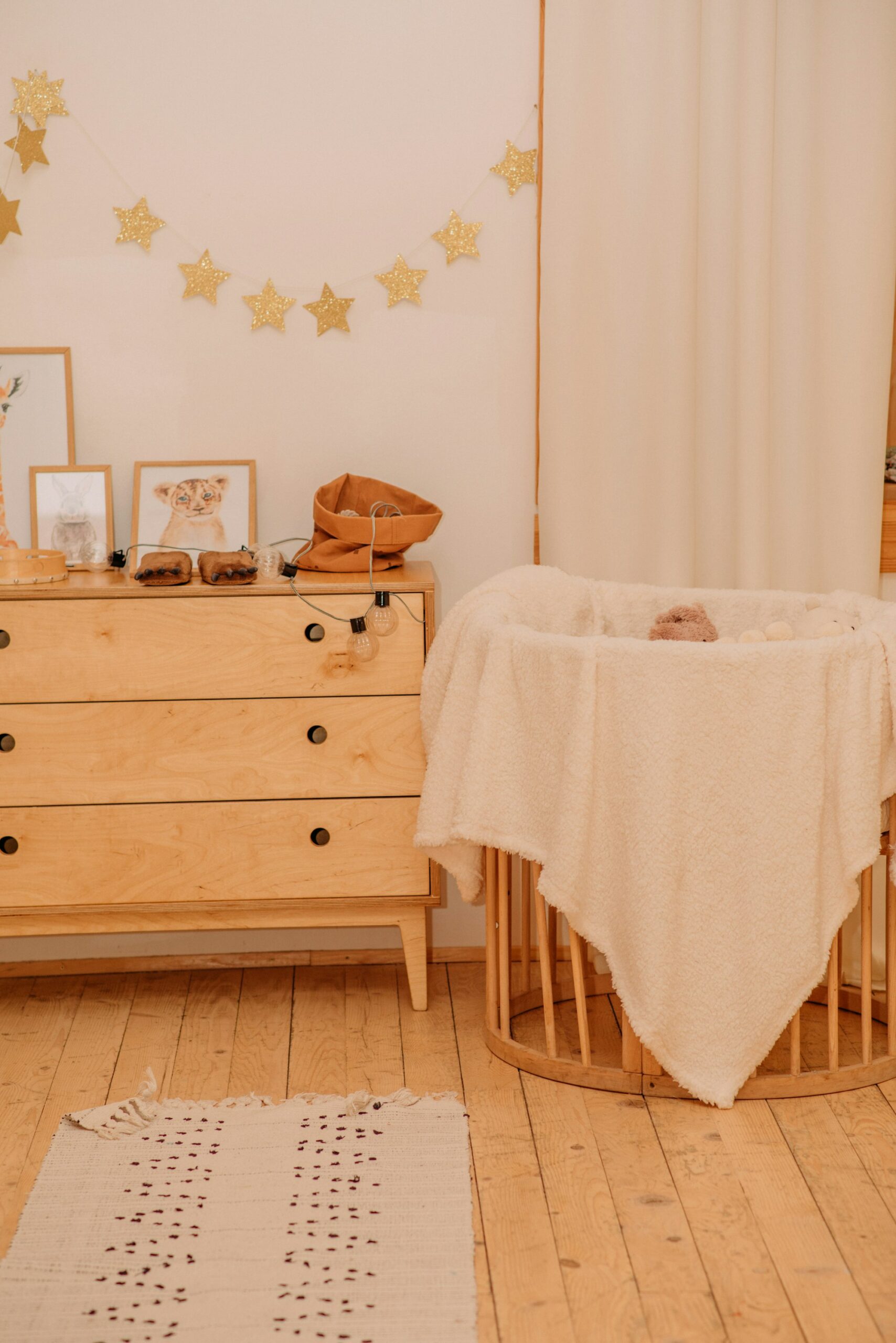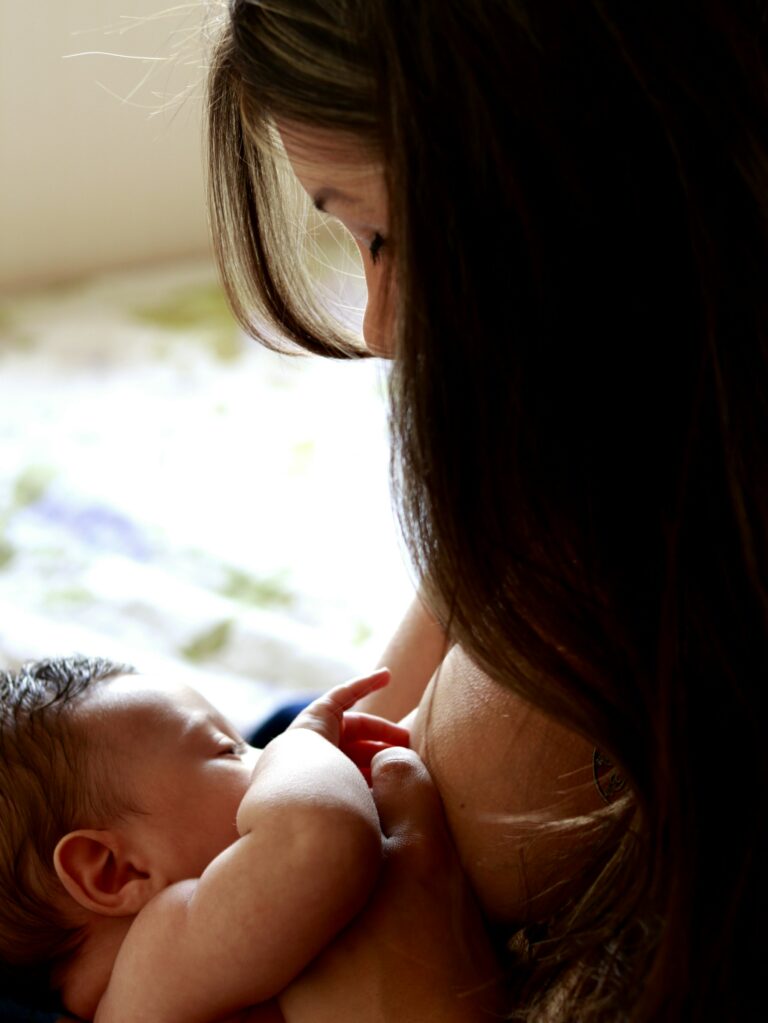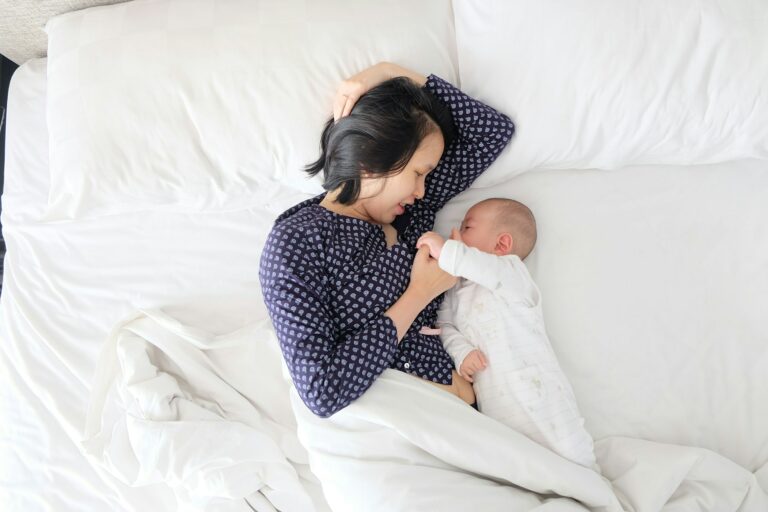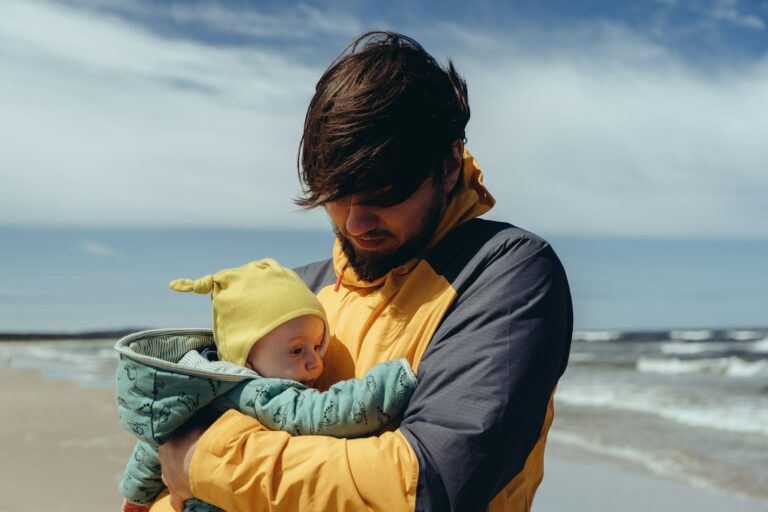The joy of holding a newborn is often met by a wakeful night—an unsettling question pops up: “Have I really gathered all that my baby needs?” Jumbled purchases, contradictory advice from family, endless internet lists… No wonder new parents sometimes feel adrift in the vast ocean of recommendations. When it comes to baby essentials for the first year, the true challenge lies in blending science-backed assurance with the comfort and practicality that every home craves. Here, the focus tightens: how to foster healthy growth, cultivate safe sleep, and streamline daily care—without burdening your mind (or living room) with gadgets gathering dust. Let’s unravel the choices; strike a balance between medical necessity, developmental support, and what’s genuinely helpful for your family’s unique rhythm.
The Real Must-Haves: Organising Baby’s First Year
Safe Sleeping Space: Bed, Mattress, and Linens
Sound, uninterrupted sleep—often a dream, sometimes a reality. What matters most? A firm, breathable mattress—scientifically proven to reduce the risk of sudden infant death syndrome (SIDS). Whether you opt for a classic crib, a bedside cot, or a bassinet, medical guidelines converge on this point: mattresses must fit snugly, firm to touch, and devoid of pillows or loose bedding. Sleep sacks (wearable blankets) offer warmth and security without risk of suffocation, and the addition of a waterproof mattress protector makes midnight clean-ups less daunting. Humidity in the baby’s room matters too—paediatricians recommend keeping air comfortable, especially in drier weather, sometimes with a humidifier if needed.
Nurturing Comfort and Development: Play Mat and Activity Gym
Stimulation matters as much as sleep. A padded play mat or activity gym, spread brightly on the floor, turns tummy time into micro-adventures. Research underscores that daily play on supportive, non-slippery surfaces strengthens neck, shoulder, and core muscles, and supports neurological development. High-contrast toys, soft rattles, and mirrors—these aren’t merely entertainment; they trigger neural pathways, essential for future physical milestones. You might notice, sometimes, babies gazing intensely at black-and-white shapes. That’s not random—contrast assists in visual focus during early months.
Hygiene and Care: Diapering Without Fuss
The subject of baby essentials for the first year sometimes pivots around the relentless cycle of diaper changes. Whether you choose cloth or disposable, the essentials remain: hypoallergenic, fragrance-free wipes, emollient-rich diaper rash cream (usually zinc oxide based), a changing mat that wipes down in seconds, and easy-to-grip baby nail scissors. Hygiene routines—frequent hand washing, regular changing, and keeping a thermometer ready—actively combat bacterial and viral threats that can trouble infants. Add a nasal aspirator for congestion and saline drops, especially during seasonal allergies.
Feeding: Breast, Bottle, or Solid Start
No amount of preparation removes uncertainty from your feeding journey. For breastfeeding: a supportive nursing pillow, breast pump (manual for occasional, electric for regular pumping), leak-absorbent pads, and lanolin-based nipple cream are handy. Bottle-feeding? Choose BPA-free bottles, varied nipple flows (adapted to baby’s age), and a bottle steriliser or boiling method to curb microbial risk. Around six months—sometimes earlier if paediatrician recommends—introduce solids using soft-tipped spoons and shatterproof bowls. For all ages: keep a stash of soft burp cloths and machine-washable bibs for each meal. A sturdy high chair is best when your baby starts sitting with support.
Clothing: Fabrics, Fit, and Adaptability
Temperature swings, rapid growth, frequent messes—baby clothes face it all. At least seven bodysuits, snap-crotch or kimono style (eases diaper changes), a mix of T-shirts, cozy pyjamas (zip or snap are a lifesaver at 2 AM), hats for the sun and winter, warm socks, and sweater layers. Science tells us that 100% cotton is most breathable, minimises chance of skin irritation, and absorbs moisture efficiently. Layering clothes, with special attention to room temperature—stick to the paediatric rule of “one layer more than you” for newborns.
Mobility and Safety: Car Seats, Strollers, and Carriers
Travel, even a short ride to the grandparents, demands planning. Rear-facing car seats, installed as per manufacturer guidelines, protect against collision—the statistics are undeniable: correct use reduces infant injury risk by more than half. A practical stroller (consider foldability, weight, and terrain) adapts to outings. Meanwhile, baby carriers or ergonomic wraps bring invaluable skin-to-skin contact, stimulate the vestibular system (balance and orientation), and free a parent’s hands. When baby starts exploring, babyproofing with outlet covers, drawer latches, baby gates, and anchoring furniture brings peace of mind and reduces accident risk dramatically.
Healthcare: First Aid and Sensitive Skin
Scrapes, fevers, and sniffles—minor emergencies sometimes appear without warning. A first aid kit with a rectal thermometer (for most accurate fever checks according to paediatric societies), bandages, prescribed ointments, digital saline solution, and gentle antiseptic is always worthy. For skin, dermatologists consistently urge use of fragrance-free, pH-balanced baby washes and mineral-based sunscreens (for above six months), as infant skin is thinner, more permeable, and prone to both irritation and sunburn.
Organisation: Smart Storage and Routine
The battle against clutter is continuous. Keep changing supplies in petite baskets, set up clothes by size (as babies shoot up overnight), and sort toys by category. Flexible storage, like bins under the crib or caddies on shelves, means less scrambling. Multipurpose furniture (think: dresser-changer combos) adapts as baby grows.
Modern Extras: Convenience and Individual Needs
Some items, not strictly mandatory, significantly increase comfort. Baby monitors let you grab a moment’s rest. Nightlights diffuse gentle illumination for late feeds. Diaper bags—with compartments for each essential—transform outings into less frantic affairs. Bouncer seats, teething rings, soft books, or a travel bassinet offer extra security and entertainment. Formula dispensers and baby food makers, though not necessary, can make feeding smoother amidst midnight wake-ups or hectic days.
Weather-Specific Adaptations
Seasonal shifts can catch anyone off-guard. Winter? Layer soft pajamas, woollen socks, mittens, and windproof bunting bags. Hot climates? Stick to muslin onesies, airy sun hats, and vigilant hydration. Always avoid over-bundling; overheating during sleep is linked to increased SIDS risk. Ventilation and proper shade—especially in the first six months—make a marked difference to comfort and safety.
Budgeting: What Really Matters
An avalanche of marketing could tempt you toward gadgets and gizmos. Focus budget on medical essentials, safety-tested gear, and comfortable feeding equipment. Prioritise quality for daily-use items—durable pieces last long and often suit siblings or friends down the line. Borrow or buy second-hand for less-used bits (dressy outfits, travel cots). Registry apps and group gifts can help streamline costs, letting family and friends contribute meaningfully.
Key Takeaways
- Evidence and paediatric advice point toward baby essentials for the first year: safe sleep spaces, routine hygiene, nutrition-focused feeding tools, weather-appropriate clothing, and mobility gear that passes safety checks.
- Organisation and flexible storage make daily care more predictable—arrange your space so the most-used items are always close at hand.
- Skin care and feeding routines benefit from gentle, proven products. Avoid additives and perfumes for minimum risk of irritation or allergies.
- Weather can demand swift adaptations. Keep one eye on temperature and the other on the layering and hydration.
- Baby’s development is fostered not just by toys, but by the freedom to explore tactile surfaces, listen to your voice, and engage in eye contact during routine care.
- Reassure yourself with trusted medical resources and, whenever in doubt, connect with healthcare professionals for clarity.
- Explore additional guidance and personalized tools with the application Heloa, designed to support your parenting journey and offer free health questionnaires for your child.
Questions Parents Ask
What are some less obvious baby essentials for the first year that can genuinely make a difference?
Beyond the basics, items like a humidifier help keep the airways moist during those surprisingly dry nights. A well-equipped baby monitor is more than comfort—it helps support safer sleep practices by quietly tracking your child while you reclaim some rest. Having a dedicated infant first aid kit, complete with digital thermometer and saline ampoules, brings welcome reassurance in those flurried moments of fever or congestion. Even a pacifier or a butter-soft blanket, while at first glance unnecessary, can offer emotional comfort during sudden transitions (midnight changes, or the first family outing).
Are there any supposed “essentials” that parents can skip?
Absolutely. Parents sometimes feel the pressure to buy every clever-sounding invention. Items like bottle warmers, wipes warmers, or complex toys are often bypassed—many children thrive with just the basics: a validated crib, soft breathable clothing, basic hygiene supplies, and a nurturing hand. Always weigh your own routines—what fits seamlessly for one family might feel out-of-place for yours.
How do you keep baby gear organized through the first year?
Try zoning your space: one station for feeding, another for hygiene, a corner for sleep. Baskets, labelled bags, and stacked caddies cut down on frantic searching. For clothes, organizing by both size and season in different boxes or drawers helps avoid that 2 AM struggle to find a pyjama that fits. And as routines evolve, don’t hesitate to reconfigure your setup—babies are masters of surprise growth spurts and unpredictable messes!
Embracing the search for baby essentials for the first year is more than ticking off a list—it’s listening to your instincts, honouring reputable medical insight, and building a start full of both joy and reassurance.









